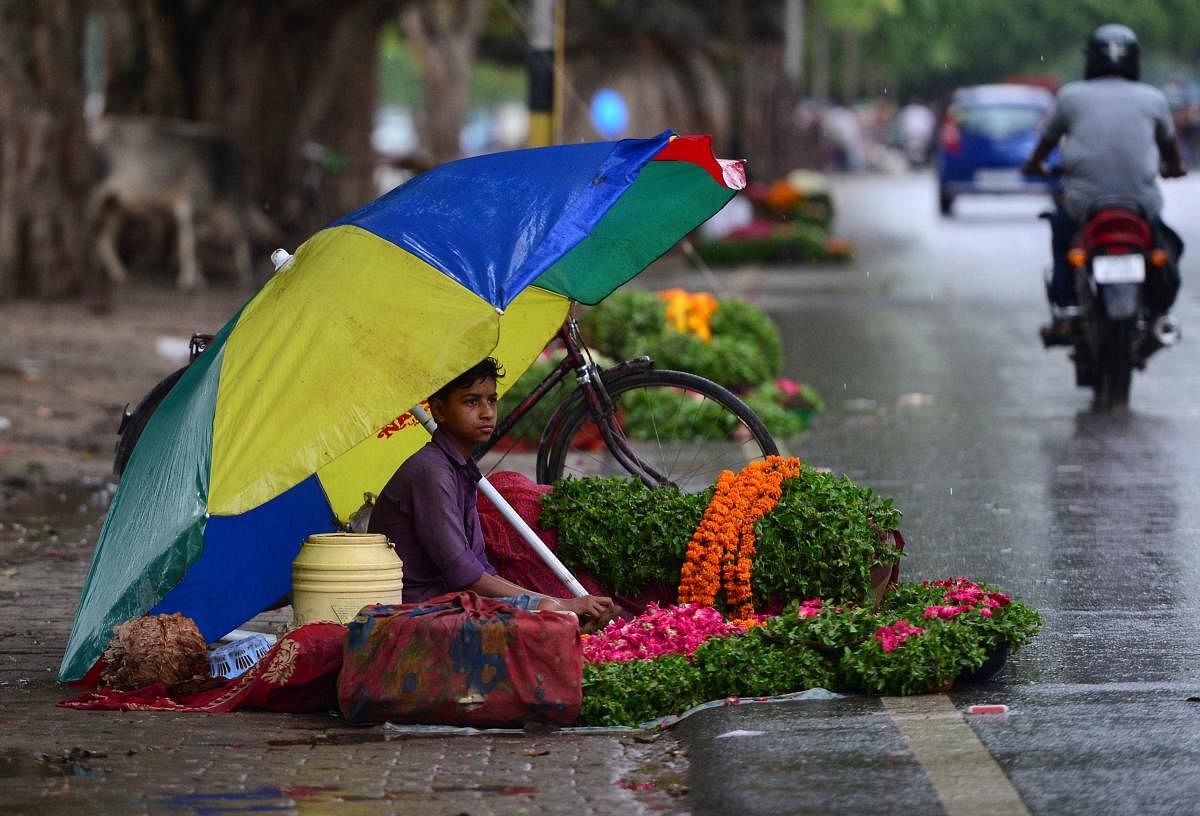
Notwithstanding a surge in July, sluggish progress of the south-west monsoon so far has not only left a large portion of the country high and dry but also raises a question mark on the sowing of crops crucial to food security.
As on July 9, India as a whole has 17% deficiency. Region-wise the southern peninsula is the worst with 30% shortfall followed by the east and northeast where the shortfall is 29%. Central India benefited maximum from the July rainfall as the June deficiency was wiped out.
Over the next five days, most of the monsoon showers are likely in east Uttar Pradesh, Bihar, Jharkhand, the North East and Himalayan foothills, leaving a large part of India devoid of widespread rainfall – the lifeline of India's nearly three trillion dollar economy.
“This would adversely affect sowing of crops,” said a senior scientist at the India Meteorological Department, differing from the official “not-a-matter-of-concern” line.
“There are four distinct types of summer crops – paddy, coarse cereals, pulses and oilseeds, and cotton and sugarcane. The problem will be maximum for coarse cereals and pulses,” L S Rathore, a former IMD director general and a specialist in agriculture meteorology told DH.
Sowing is down by more than 85 lakh hectares as on July 5 with the maximum drop reported in food grain and oilseeds. But with the monsoon likely to pick up pace in the east, the deficiency in paddy cultivation at least are likely to be made up.
“The gap in rainfall in central India would help farmers plant their summer crops as the monsoon would remain active in the east next few days. A fresh low-pressure system would be activated in the Bay of Bengal around July 16 to bring more rain to east and central India,” said K J Ramesh, IMD director general.
The shortfall is primarily due to a severely dry June that ended up with 33% deficiency. Intense rainfall in the first part of July led to a partial resurrection, but the rainfall remains in the deficient category in 12 out of 36 meteorological subdivisions. Except for north interior Karnataka, every meteorological subdivision in south India is in the red.
Private weather forecaster Skymet predicted a “break period” in monsoon activity after July 15 while IMD stuck to its stated position of a normal south-west monsoon season due to a weak El Nino, an unusual warming up of the Pacific Ocean, which impacts the Indian monsoon.
A section of the weatherman hopes for a heavy downpour in August and September to make up for the losses. “But too much of rain in September could be problematic for cotton because that's the time for cotton balls to open up. The rhythm of rainfall this year doesn't seem to be promising for crops,” Rathore said.
